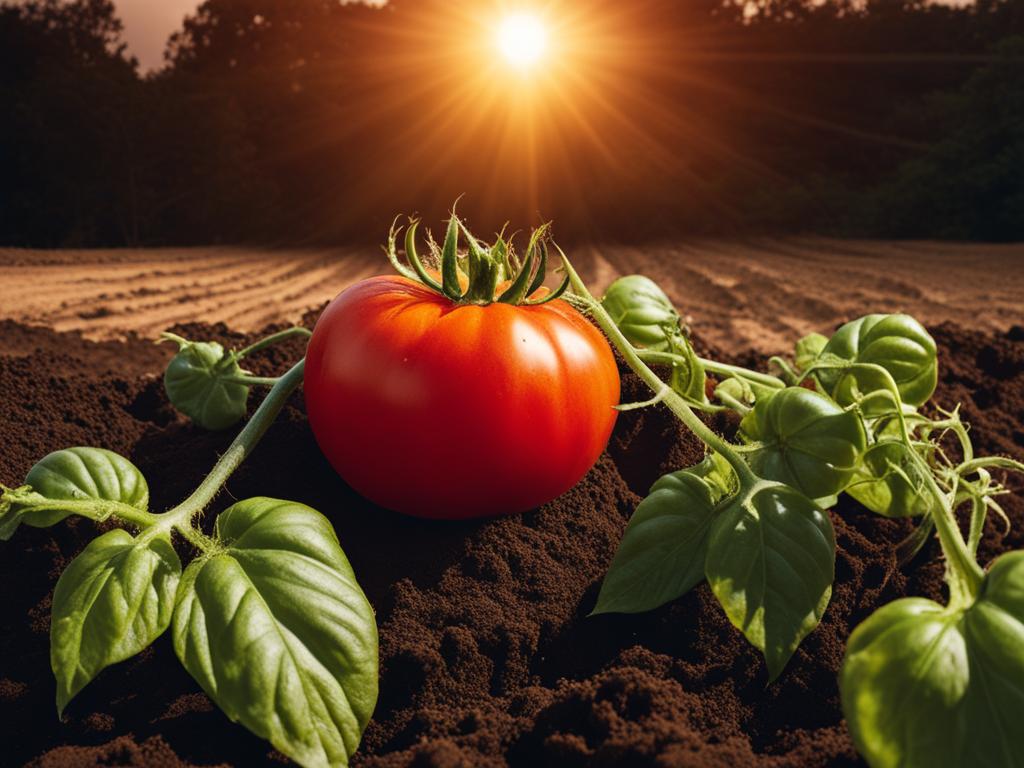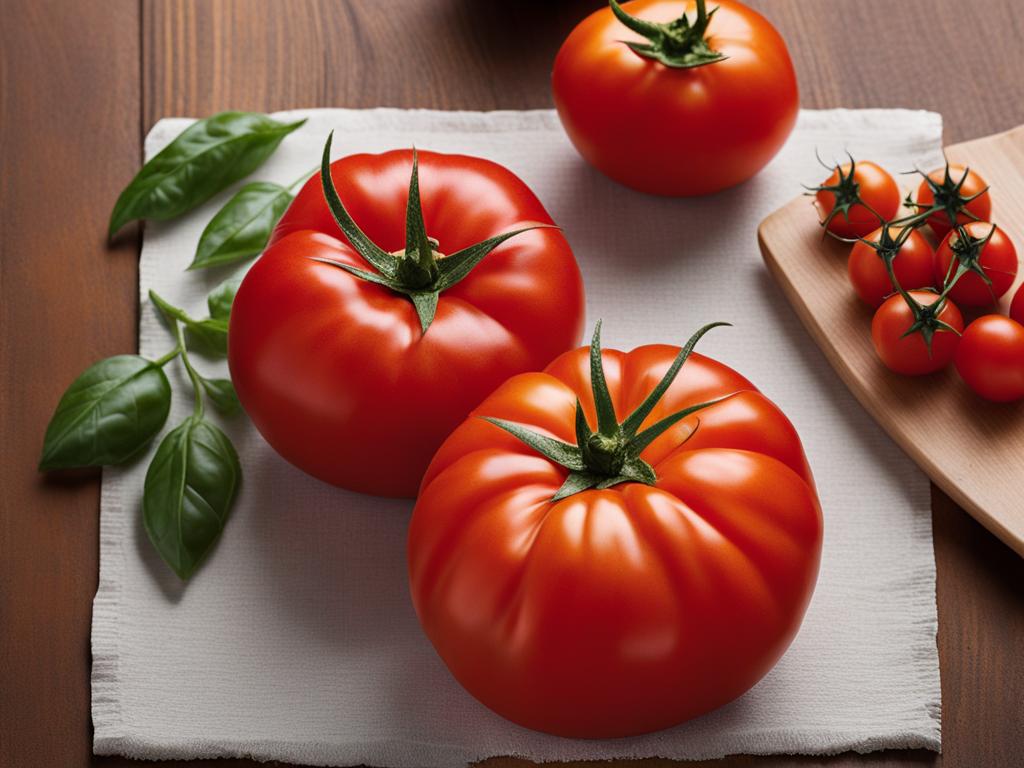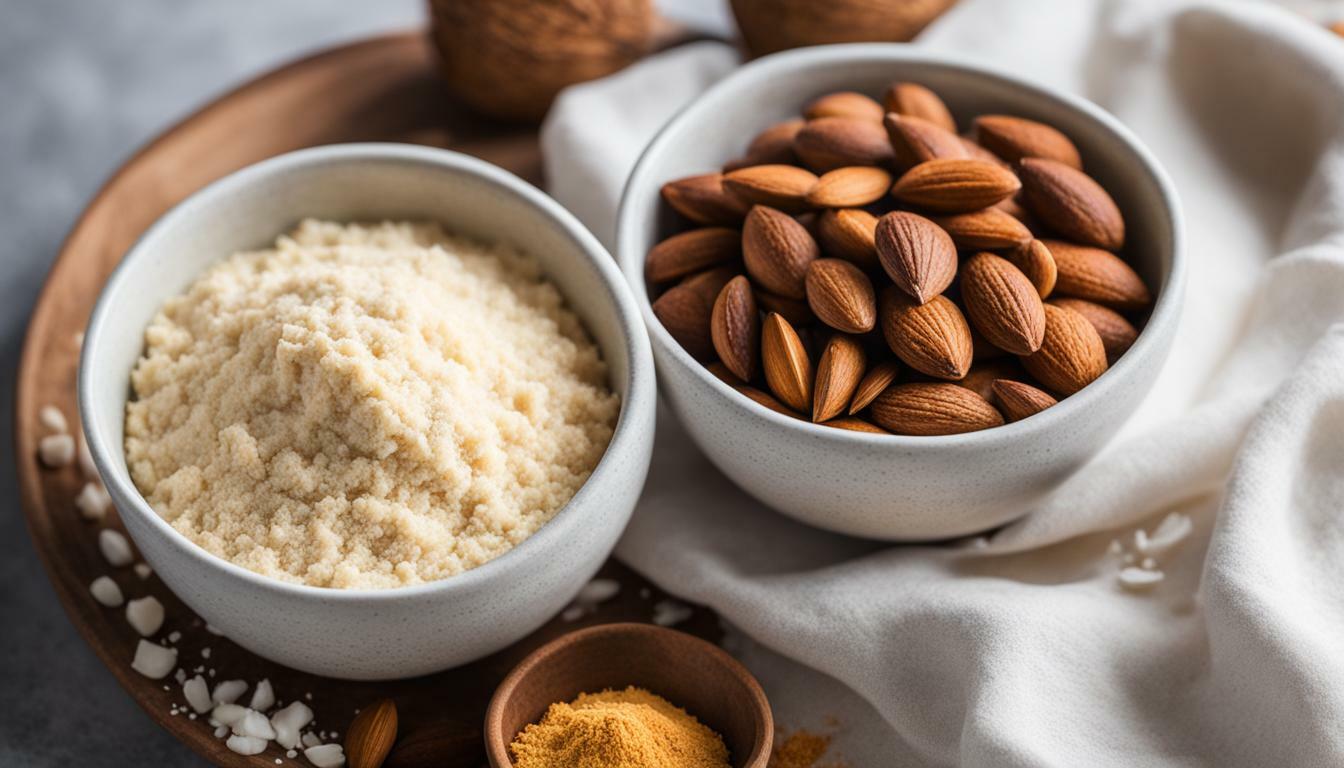Welcome to our article on the difference between a beefsteak tomato and a Roma tomato. These two tomato varieties have distinct characteristics, tastes, and uses in the culinary world. Understanding their differences will help you choose the right tomato for your recipes and preferences.
Key Takeaways:
- Beefsteak tomatoes are known for their large size, vibrant red color, and robust flavor.
- Roma tomatoes, also known as Italian plum tomatoes, have an oblong shape and a meaty texture.
- Beefsteak tomatoes are often used in sandwiches and burgers, while Roma tomatoes are preferred for making tomato sauces and pastes.
- Beefsteak tomatoes have a juicy texture, while Roma tomatoes have less juice and fewer seeds.
- Both tomatoes offer unique characteristics and flavors, offering versatility in the kitchen.
Characteristics of Beefsteak Tomato
Beefsteak tomatoes are renowned for their distinctive characteristics that set them apart from other tomato varieties. These large and flavorful fruits possess unique attributes that make them a favorite among tomato enthusiasts.
One of the defining characteristics of beefsteak tomatoes is their impressive size. These fruits can weigh up to a pound or even more, making them one of the largest tomato varieties available. Their irregular shape, often with a ribbed or ruffled appearance, adds to their visual appeal, making them stand out in both gardens and grocery stores.
The taste of beefsteak tomatoes is another noteworthy characteristic. These tomatoes have a rich and sweet flavor that is perfectly balanced with a subtle acidity. When you bite into a beefsteak tomato, you can expect a burst of juiciness and a delightful harmony of flavors that elevate any dish they’re incorporated into.
| Characteristics | Description |
|---|---|
| Size | Large, weighing up to a pound or more |
| Shape | Irregular with a ribbed or ruffled appearance |
| Taste | Rich, sweet, and balanced with acidity |
| Uses | Versatile and ideal for sandwiches, salads, and sauces |
Due to their size and exceptional flavor, beefsteak tomatoes are incredibly versatile in the kitchen. They can be used in a variety of culinary preparations, including sliced on sandwiches, chopped in salads, or incorporated into sauces for an added punch of flavor. Their robust taste and juiciness make them a popular choice among tomato enthusiasts and chefs alike.
Overall, the characteristics of beefsteak tomatoes make them a standout variety in the world of tomatoes. From their impressive size to their rich flavor, these tomatoes bring a delightful burst of taste to any dish they grace. Whether you’re using them in a sandwich or slicing them for a salad, beefsteak tomatoes are sure to leave a lasting impression.
Characteristics of Roma Tomato
The Roma tomato, also known as the Italian plum tomato, possesses several unique characteristics that set it apart from other varieties. The Roma tomato has an oblong shape and a firm, meaty texture, making it ideal for certain culinary applications. Its vibrant red color and smooth skin add to its visual appeal.
Unlike beefsteak tomatoes, Roma tomatoes have a low moisture content, resulting in less juice and fewer seeds. This characteristic makes them perfect for cooking down into rich and flavorful tomato sauces and pastes. The tangy taste of Roma tomatoes adds a delicious twist to various Italian dishes, such as pasta sauces, stews, and bruschetta.
In summary, the characteristics of Roma tomatoes include:
- Oblong shape
- Firm, meaty texture
- Low moisture content
- Tangy taste
- Commonly used in Italian cuisine

In the United States, beefsteak tomatoes are commonly associated with summer, as they thrive in warm climates. They have become a staple in backyard gardens and farmers’ markets, with enthusiasts eagerly awaiting the peak tomato season to savor their juicy and flavorful harvest.
The rich history and widespread cultivation of beefsteak tomatoes have contributed to their status as a beloved variety in the tomato world. Whether enjoyed fresh in sandwiches or used as a key ingredient in sauces and salads, beefsteak tomatoes continue to delight taste buds with their distinct flavor and remarkable size.
History and Origin of Roma Tomato
The history of the Roma tomato can be traced back to the late 1950s in Italy. These tomatoes were specifically bred for their characteristics, with a focus on their canning and preserving qualities. The name “Roma” pays homage to the city of Rome, which has a rich culinary tradition and is known for its tomato-based dishes.
Roma tomatoes are the result of crossbreeding various tomato varieties, including the famous San Marzano tomato. This variety is known for its exceptional flavor and dense flesh, which contributes to the meaty texture found in Roma tomatoes. The popularity of Roma tomatoes quickly spread beyond Italy and they became a staple ingredient in many cuisines around the world.
To understand the origin of Roma tomatoes, it is important to recognize the significance of their development. Farmers and breeders invested time and effort into creating a tomato variety that would exhibit the desired characteristics for sauces and pastes. Roma tomatoes have a vibrant red color and smooth skin, making them visually appealing. Their low moisture content, fewer seeds, and tangy taste make them ideal for cooking down into rich and flavorful tomato sauces and pastes.
“The Roma tomato is a true culinary treasure, with its history rooted in the heart of Italian cuisine. Its unique characteristics and versatility have made it a beloved ingredient in countless dishes around the world.” – Chef Giovanni Rossi
With a rich history and a distinct origin, Roma tomatoes have become a valued ingredient in kitchens worldwide. Whether used in traditional Italian recipes or incorporated into international cuisines, these tomatoes continue to deliver exceptional flavor and texture. The Roma tomato’s legacy is one of culinary excellence, and its impact on the culinary world is undeniable.
| Characteristics of Roma Tomato | Details |
|---|---|
| Shape | Oblong |
| Texture | Firm and meaty |
| Color | Vibrant red |
| Moisture Content | Low |
| Taste | Tangy |
| Common Uses | Pasta sauces, stews, bruschetta |

| Beefsteak Tomato Varieties | Roma Tomato Varieties |
|---|---|
| Brandywine | San Marzano |
| Cherokee Purple | Amish Paste |
| Beefmaster | Viva Italia |
| Big Beef | Roma VF |
| Mortgage Lifter | Roma Gold |
These are just a few examples of the diverse range of beefsteak and Roma tomato varieties available. Each variety brings its own unique qualities to the table, allowing for a variety of culinary creations and personal preferences.
Conclusion
In conclusion, when comparing beefsteak tomatoes and Roma tomatoes, it is clear that they have distinct differences in characteristics and culinary uses.
Beefsteak tomatoes are known for their large size, irregular shape, and robust flavor. With their juicy texture and perfect balance of acidity and sweetness, they are ideal for sandwiches, salads, and various culinary preparations.
Roma tomatoes, on the other hand, have an oblong shape, firm texture, and tangy taste. Their lower moisture content, fewer seeds, and meaty flesh make them perfect for cooking down into rich and flavorful tomato sauces and pastes, particularly in Italian cuisine.
Both tomatoes offer their unique features and flavors, allowing for versatility in the kitchen and catering to different culinary needs. Whether you’re looking for a juicy and vibrant addition to your sandwich or a tomato that can enhance the depth of your pasta sauce, beefsteak tomatoes and Roma tomatoes each have their place in creating delicious dishes.
FAQ
What is the difference between a Beefsteak Tomato and a Roma Tomato?
Beefsteak tomatoes are known for their large size, robust flavor, and vibrant red color. They have an irregular shape and smooth, firm skin. Roma tomatoes, also known as Italian plum tomatoes, have an oblong shape and a meaty texture. They have less juice and fewer seeds compared to beefsteak tomatoes, making them ideal for cooking down into sauces and pastes.
What are the characteristics of a Beefsteak Tomato?
Beefsteak tomatoes are known for their large size, weighing up to a pound or more. They have an irregular shape with a ribbed or ruffled appearance. The skin is smooth and firm, while the flesh is juicy and has a high water content. Beefsteak tomatoes have a rich and sweet flavor, with a perfect balance of acidity. They are versatile and can be used in various culinary preparations, including sandwiches, salads, and sauces.
What are the characteristics of a Roma Tomato?
Roma tomatoes have an oblong shape and a firm, meaty texture. They have a vibrant red color and smooth skin. Roma tomatoes have a low moisture content, making them ideal for cooking down into rich and flavorful tomato sauces and pastes. They have fewer seeds and less juice compared to beefsteak tomatoes. Roma tomatoes have a tangy taste and are commonly used in Italian cuisine for dishes like pasta sauces, stews, and bruschetta.
What is the history and origin of Beefsteak Tomato?
The history of beefsteak tomatoes dates back to the early 19th century in the United States. They were developed from wild tomato varieties native to South America. The name “beefsteak” comes from their resemblance to a juicy, meaty steak. Beefsteak tomatoes were initially grown for personal consumption but soon gained popularity for their exceptional size and flavor. They are now cultivated in various regions around the world.
What is the history and origin of Roma Tomato?
Roma tomatoes were developed in the late 1950s in Italy. They were bred specifically for canning and preserving, hence their name, which pays homage to the city of Rome. Roma tomatoes are a result of crossbreeding various tomato varieties, including the San Marzano tomato, known for its rich flavor and dense flesh. The popularity of Roma tomatoes grew, and they became a staple in Italian cuisine. Today, they are cultivated in multiple regions globally.
What are the varieties of Beefsteak Tomato and Roma Tomato?
Beefsteak tomatoes come in a variety of cultivars, including Brandywine, Cherokee Purple, Beefmaster, Big Beef, and Mortgage Lifter. These varieties differ in size, flavor, and appearance but all share the characteristic large size and robust flavor of beefsteak tomatoes. Roma tomatoes also have different cultivars, including San Marzano, Amish Paste, Viva Italia, Roma VF, and Roma Gold. Each variety of Roma tomato offers unique characteristics, allowing for different preferences and culinary applications.
 Skip to main content
Skip to main content


